Scenic RV camping is one of my favorite ways to truly experience the great outdoors. Summer brings some of the best opportunities to roll the windows down, let the breeze in, and soak in beautiful landscapes at your own pace. I’ve gathered my top five scenic RV camping routes that offer incredible views, iconic campgrounds, and unforgettable moments. Whether you’re new to RV travel or have explored quite a bit, these routes all have something special, with plenty of practical tips to help you make the most of your adventure.
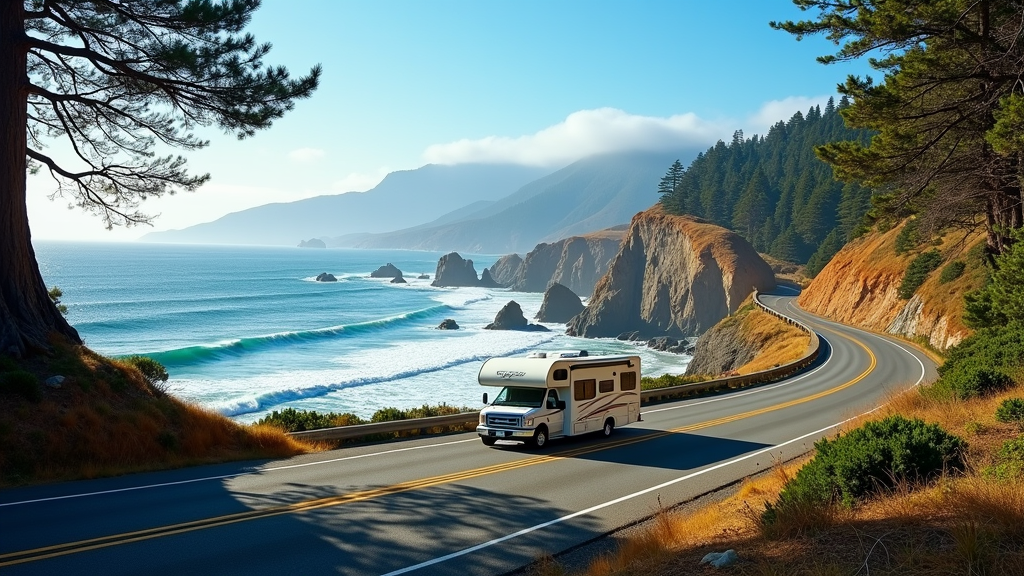
Table of Contents
- California Dreamin’: Pacific Coast Highway
- Glacier National Park, Montana
- The Blue Ridge Parkway (Virginia to North Carolina)
- Great Lakes Getaway (Michigan & Wisconsin)
- Utah’s Mighty 5 National Parks
- Bonus Route: Texas Hill Country
- Quick RV Travel Tips for Summer 2025
- Frequently Asked Questions
California Dreamin’: Pacific Coast Highway
RV trips through California’s Pacific Coast Highway rank high on just about every road trip bucket list, and for good reason. Traveling from San Francisco to San Diego on Highway 1 means hours of oceanfront views, misty cliffs, and cool little towns with their own West Coast vibe.
There’s something magical about waking up to sea breezes and falling asleep to the sound of crashing waves. Big Sur feels wild and untouched, with massive redwoods right next to rugged coastlines. Pismo Beach is perfect for a classic beach town stop, and Santa Barbara welcomes you with palm trees and Spanish-style architecture. Each area offers RV friendly campgrounds with the kind of scenery you’d expect in travel magazines.
Summer is absolutely prime time for this route, but that means spots at coastal campgrounds vanish quickly. I recommend reserving campsites as early as possible, especially for state beach campgrounds like Pfeiffer Big Sur and Refugio State Beach. Packing some good beach chairs and binoculars for whale watching doesn’t hurt either.
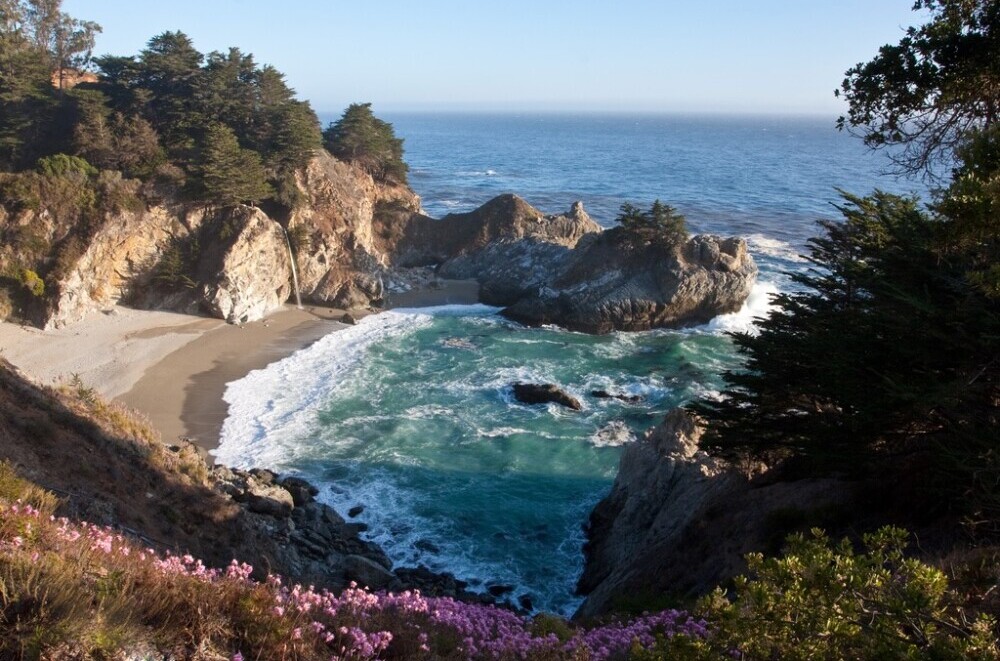
For even more fun, try some of the area’s local seafood joints or plan a day exploring tide pools along quiet stretches of beach. California’s coast also boasts art galleries and farmer’s markets in many towns, perfect for sampling fresh produce and meeting friendly locals.
Glacier National Park, Montana
Glacier National Park feels straight out of a postcard; towering mountains, wildflower meadows, shimmering lakes, and frequent wildlife sightings are just about guaranteed. Taking your RV here gives you wide open skies and peaceful mornings with only the sound of birds and the occasional moose trotting by your campsite.
The park’s Going to the Sun Road is a highlight. It’s not the easiest to drive in a large RV (there are length restrictions), but shuttles run frequently and let you enjoy the views without worrying about sharp turns or traffic. Lake McDonald’s crystal waters are perfect for cooling off, and hiking in the Many Glacier area reveals hidden lakes and even more epic scenery. RV campgrounds inside and near the park fill up super fast in summer, so snag an early reservation for the best spots. As the season goes on the chance of wildfires is greater and effects the scenery. Usually in August.
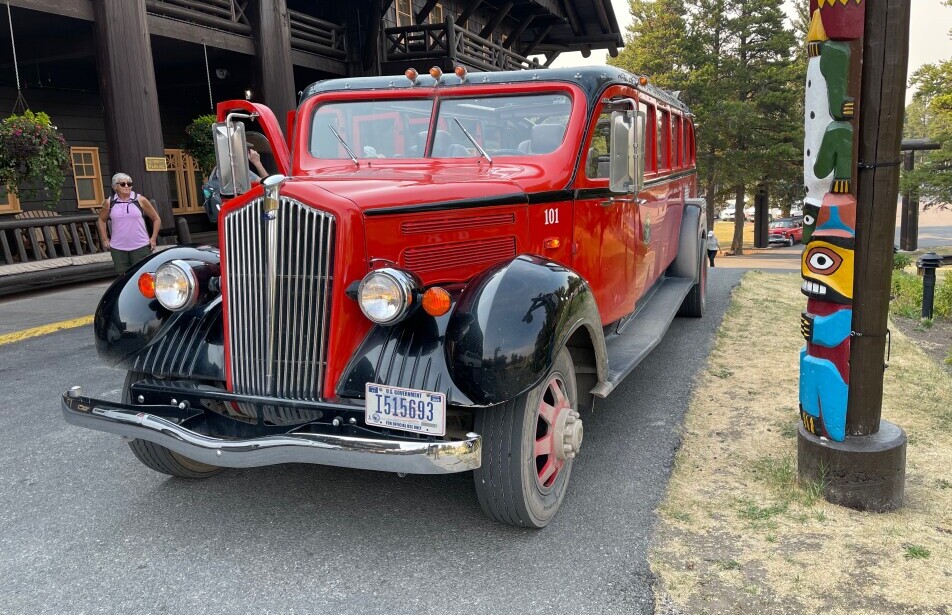
If you’re bringing bikes or kayaks, this park offers endless places to use them. Little touches, like packing a camera for sunrise shots or having a pair of binoculars ready for mountain goats, go a long way. There’s no cell service in a lot of Glacier, so I keep a paper map handy and just enjoy unplugging for a while.
Don’t forget to check out local ranger programs at the visitor centers, where you’ll stumble upon cool facts and maybe even track down new trails. Grabbing a treat from nearby historic lodges like Lake McDonald Lodge also adds to the experience.
The Blue Ridge Parkway (Virginia to North Carolina)
The Blue Ridge Parkway is nicknamed “America’s Favorite Drive” for a reason. Traveling from Shenandoah National Park down to the Smoky Mountains, this route weaves through gentle hills and thick forests that practically glow green in the summer sun. It’s a super relaxing environment, perfect for travelers looking to slow the pace and breathe in tons of fresh air.
Some classic stops along the way include overlooks in Shenandoah, an afternoon in Asheville’s artsy downtown, and a hike up to Mount Mitchell, the tallest peak east of the Mississippi. The parkway is known for twists and turns, so take things slow when driving, especially with a larger rig. Pullover views are everywhere, and many campgrounds along the route are designed to handle RVs of most sizes, complete with picnic tables and oldschool fire rings ready for s’mores.
I always suggest a few extra days for this drive. There’s plenty of tucked away waterfalls and quirky towns you just don’t want to rush past.
Wildlife watching is a treat here, especially in early morning or late evening. Musicians sometimes perform at scenic overlooks or local spots, giving you a taste of Appalachian culture. Many small towns along the parkway host summer festivals, celebrating regional art and crafts. Checking in at local visitor centers can help you spot must see events during your adventure.
Great Lakes Getaway (Michigan & Wisconsin)
For anyone who loves cool breezes, freshwater beaches, and lovely small towns, Michigan and Wisconsin have some pretty awesome route options by the Great Lakes. Cruising around Lake Michigan’s shoreline, you’ll swap salt air for clear blue inland seas, rolling sand dunes, and feelgood summer festivals.
Highlights like Sleeping Bear Dunes National Lakeshore are perfect for both hiking and relaxing on soft sand. Mackinac Island makes for a change of pace with its Victorian vibes, and you can ferry over for the day and leave your RV back on the mainland. Door County, Wisconsin offers cherry orchards, waterfront parks, and quaint marinas, all made for easygoing exploration.
One trick I picked up is to look into unique overnight stays through services like Harvest Hosts. You can often camp onsite at family owned farms, wineries, or breweries (just check ahead for RV size and hookups). I always bring extra swim gear and a paddleboard for these spots, since there’s no shortage of peaceful lakes and gentle rivers to float on.
Don’t miss chances to check out the region’s lighthouses or try local cheese in Wisconsin. Enjoying a Lake Michigan sunset is a must—pack a comfy blanket and a camera. Many local harbors offer boat tours or fishing trips for a taste of lake life.
Utah’s Mighty 5 National Parks
Utah is blessed with five national parks that really pack a punch: Zion, Bryce Canyon, Arches, Capitol Reef, and Canyonlands. Each one feels unique, but all deliver jaw dropping views and outdoors action for every comfort level. From the red rock spires of Bryce to the deep canyons of Zion, there’s no shortage of hiking, sunrises, and photo ops.
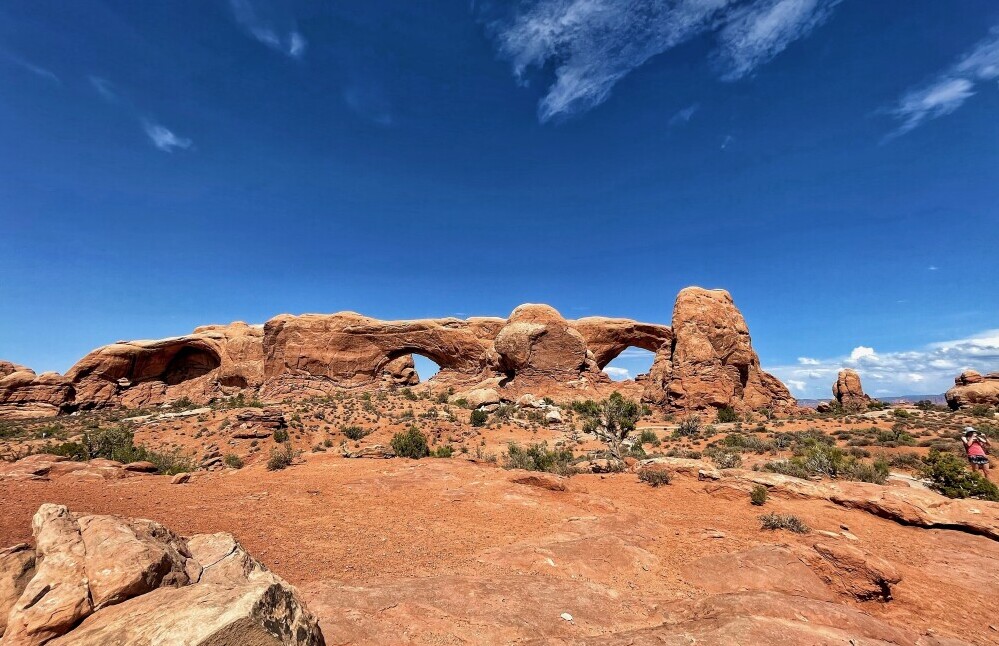
Hiking is the main draw, but simply relaxing at your campsite, while massive stone formations glow orange in the evening sun, makes for a special kind of magic. I like to start hikes or scenic drives in the early morning to avoid the hottest part of the day (Utah really heats up in summer), and keeping your rig cooled down in the afternoon helps everyone rest easy.
All five parks offer RV friendly sites, but summer tends to be busy. I plan my trips around reservations and don’t mind short detours for less popular campgrounds close to the parks if my top choices are booked up. Carrying extra water and lots of sunscreen pays off out here; shade can be hard to come by.
If you have more time, exploring nearby state parks reveals even more beautiful scenery and usually comes with fewer crowds. Stargazing in southern Utah is legendary, so a clear night by the campfire is a perfect wrap up to any day.
Bonus Route: Texas Hill Country
If you’re craving wide open spaces, clear rivers, and authentic BBQ, a drive through Texas Hill Country is worth adding to your summer plans. Rolling hills dotted with wildflowers and friendly historic towns like Fredericksburg provide a cozy welcome. Favorite camping stops like Garner State Park and Enchanted Rock offer spots to hike, swim, or just relax under giant oak trees.
Summer in Texas gets hot, so I recommend booking campsites with electric hookups to keep your RV cool and everyone happy. Enjoying local barbecue and checking out small town antique shops adds a fun twist to the adventure.
You might also want to stop at nearby swimming holes like Hamilton Pool or float the Guadalupe River to beat the heat. Festivals celebrating music and peaches are held throughout the summer—all adding flavor to your Hill Country road trip.
Quick RV Travel Tips for Summer 2025
- Reserve campgrounds as soon as possible, especially near national parks or on the coast
- Pack a surge protector and extra hoses for campground hookups
- Do a full walk around RV inspection before you hit the road
- Layers are your friend, since mountain nights and coastal mornings can get chilly, even in summer
- Download offline maps or GPS before hitting remote areas since cell service can be spotty in the wild
- Bring cash for some older campgrounds or local markets that might not accept cards
- Have a basic tool kit for small repairs—unexpected fixes come up on every trip
- Connect with fellow travelers at campground events or potlucks for fresh ideas and tips
- Use a dedicated RV Trip planning app. I use RV Trip Wizard (Affiliate link) from RV Life. See this post for a walk through of how I used RV Trip Wizard in real life.
Frequently Asked Questions
Question: How early do I need to book summer campsites?
Answer: I suggest booking three to six months ahead if you’re aiming for top spots in popular national parks or along the coast. Some parks open reservations up to 12 months out, so it never hurts to plan ahead.
Question: Are there size restrictions on any of these routes?
Answer: Some scenic drives, like Glacier’s Going to the Sun Road or certain pullouts on Highway 1, do have length or height restrictions. Checking official park websites before traveling helps avoid surprises.
Question: What if my RV doesn’t have air conditioning?
Answer: Stick to cooler zones like the Pacific Coast, Great Lakes, or Blue Ridge Parkway during the hottest weeks, and aim for shaded campsites wherever possible. Early morning starts and awnings also help a lot.
About the Author
Jim has 3.5 years of experience living and traveling full-time in an RV. From “moochdocking” with family and friends to navigating the financial intricacies of RV life, he shares practical advice rooted in firsthand experience. His goal is to help fellow adventurers embrace the RV lifestyle with confidence and ease.

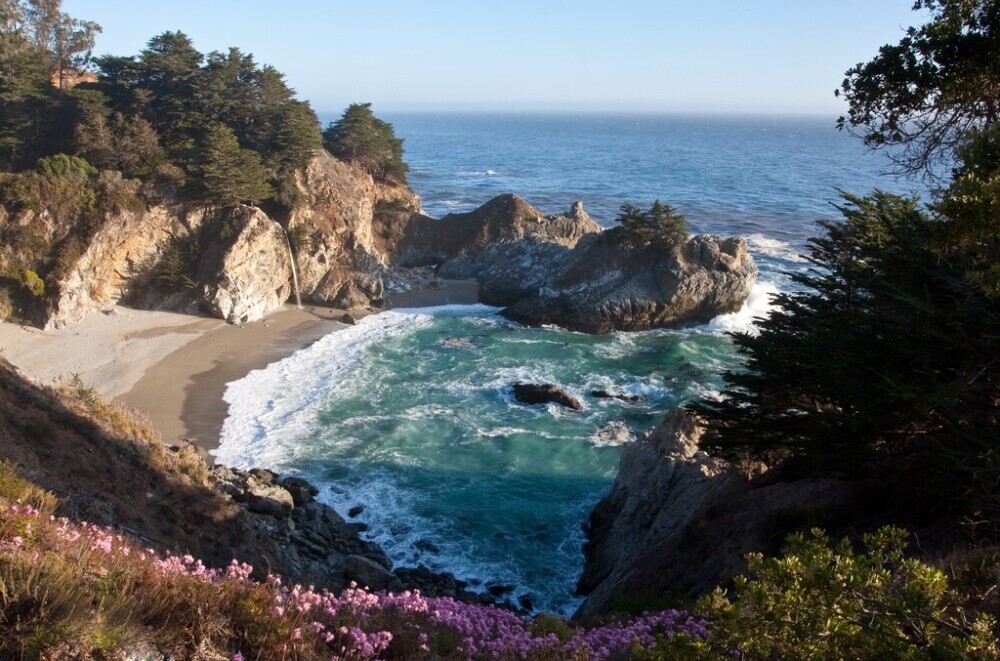
Wow, this post just lit a spark in me to start planning a summer RV trip! Each of the routes you mentioned sounds breathtaking, especially the Blue Ridge Parkway and the Pacific Coast Highway—both have been on my bucket list for ages.
I love how you included a nice variety of landscapes and experiences, from coastal views to mountain drives. I was wondering, though—do you have a personal favorite among the five? And for someone new to RV camping, are there any beginner-friendly stops or campsites along these routes that you’d recommend?
Thanks so much for this inspiring list—I’m already dreaming of open roads and scenic views!
Thanks so much for your kind words, I’m really glad the post sparked some travel inspiration! The Blue Ridge Parkway holds a special place for its peaceful drives and stunning overlooks, but it’s hard to beat the coastal drama of the Pacific Coast Highway too. For beginners, I’d recommend starting with shorter stretches of each route. For example, along the Blue Ridge Parkway, Julian Price Campground in North Carolina is a great, beginner-friendly stop with beautiful views and easy access to hiking trails. Along the PCH, try staying at San Simeon State Park, it’s RV-friendly and close to iconic sights like Hearst Castle. Wishing you the best as you start planning. Feel free to reach out with any trip questions!
Hey Jim,
This post was like a roadmap to wanderlust—I’m already mentally reorganizing my summer plans. I’ve done the Pacific Coast Highway by car, and you’re right—it’s a knockout. Ocean views, breezy vibes, and seafood that ruins all other seafood. But now you’ve got me seriously considering swapping my suitcase for a steering wheel and a fold-out picnic table.
The Blue Ridge Parkway especially caught my eye. I mean, misty mountains and roadside music? Yes, please. It sounds like the kind of place where you slow down, breathe deep, and maybe buy homemade jam from someone named Ethel.
Here’s what I’m wondering: Which of these routes are truly kid-friendly—not just “bring a coloring book and hope for the best,” but places with actual activities, fun campground perks, or pit stops that don’t involve bribing your kids with snacks? Bonus points if the campgrounds offer something beyond a patch of dirt and a fire ring.
Also, any must-have entertainment hacks for the littles during long drives? I’m all for road trip magic, but even magic needs backup when the “are we there yet?” hits on repeat.
Thanks for the inspiration—your tips are gold, and your writing makes me want to fill up the gas tank and go make some postcard-worthy memories.
—JarieLyn
Hey JarieLyn,
Your comment absolutely made my day—thank you! I love how you captured the spirit of these routes with such vivid energy (and yes, that seafood on the PCH does ruin you in the best way). The Blue Ridge Parkway is exactly the kind of place where time slows down—and you will find someone selling jam out of a roadside stand, probably while humming a bluegrass tune.
As for kid-friendly routes, you’re spot-on to ask. A few of these have great stops built in for families—think nature centers, easy hiking trails, and campgrounds with splash pads or playgrounds. I’ll put together a follow-up with my favorite family-ready routes and campground picks, plus a few road trip sanity-savers for the back seat crew. Magic deserves good backup, after all.
Appreciate you reading and riding along!
—Jim